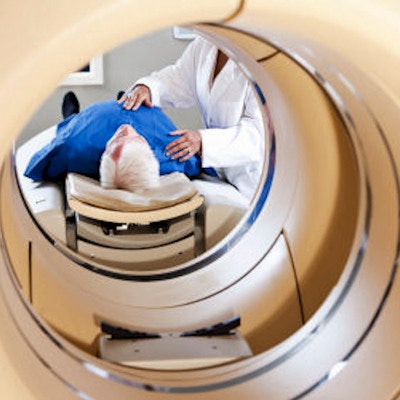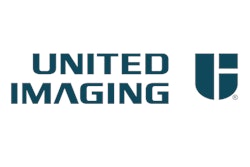
Procedure volume in the PET market is continuing to grow at about 6% per year in the U.S. since 2013, reaching its highest level ever in the U.S. in 2019, according to a new report by IMV Medical Information Division.
An estimated 2,200,800 clinical PET scans were performed in U.S. hospital and nonhospital sites using fixed PET imaging systems or mobile PET services, according to IMV's newly published "2020 PET Imaging Market Summary Report." Compared with an estimated 2,086,000 PET scans performed in 2018, total PET scans increased about 6% to 2,200,800 in 2019, representing the highest level of PET scan volume to date in the U.S.
Moreover, based on estimates for the next 12 months provided by the survey respondents, total PET scans will continue the single-digit growth trend of a 6% to 7% increase in PET scans in 2020.
 Lorna Young of IMV Medical Information Division.
Lorna Young of IMV Medical Information Division.PET has been an exciting medical imaging technology since its inception, due to its ability to detect organ function on a cellular and molecular level using radiotracers that the PET technology detects. The development of PET/CT -- which fuses PET metabolic images with CT anatomic images, enhancing the ability to locate specific areas of abnormal cell activity -- has led to a rapid adoption of PET/CT scanners in the U.S. since the early 2000s.
The primary use of PET imaging has been for cancer patients, with oncology procedures consistently comprising about 90% of clinical PET scans. In oncology, FDG is used as the radiotracer to identify active cancer cells, as FDG is a compound similar to sugar, which cancer cells metabolize at high rates.
For PET imaging sites, oncology scans have been a stable source of patients, with the modality used to diagnose the extent of cancer and ongoing patient management, particularly for patients with lung disease, Hodgkin's lymphoma, and breast cancer.
However, although the use of PET imaging is at its highest point, total PET scan volume represents only 2% of the 91.4 million CT scans performed on CT-only scanners in the U.S. (as estimated in IMV's "2019 CT Market Outlook Report"). PET imaging is not a "primary care" modality, as patients are typically referred to PET after they are suspected of having cancer using other tests. The top three sources of physician referrals to PET are medical oncologists, radiation oncologists, and pulmonologists.
IMV estimates that 2,370 sites are performing PET scans in the U.S., with 60% of the PET imaging sites using fixed PET units installed on site, including PET-only, PET/CT, and PET/MR scanners. The other 40% of the sites are using mobile PET services that stop at their facilities for several days per month.
IMV finds that the sites using mobile PET services are not quick to adopt their own fixed units yet, likely due to reimbursements as well as the relatively "stable" market for oncology scans. The addition of new PET scanners in a geographic area is more likely to steal volume from other providers rather than increasing the total pie.
Researchers and early adopters are excited about the potential of using PET for cardiac imaging and neurology applications. IMV estimates that the volume of PET cardiology scans has more than doubled in the five years from 2014 to 2019, but it observes that cardiology-related PET scans are only 8% of the total PET scans performed in 2019.
A relatively low 11% of the PET sites currently perform cardiology PET scans, which primarily consist of myocardial perfusion scans using rubidium-82 or nitrogen-13 ammonia. Neurology scans currently constitute only 3% of the total PET scan volume in 2019, but a higher 38% of the PET sites perform some type of neurology-related scans, such as for patients suspected of having Alzheimer's disease or dementia.
Faster growth of PET imaging since 2013 may have been inhibited due to the adoption of "appropriate use" criteria by the American College of Radiology, the Society of Nuclear Medicine and Molecular Imaging, and related associations. Furthermore, the usage of appropriate use criteria in ordering PET scans has been reinforced by the change in reporting policy from the U.S. Centers for Medicare and Medicaid Services, mandating that under the Protecting Access to Medicare Act of 2014 (PAMA).
Under PAMA, physicians are to utilize a clinical decision support system for ordering imaging studies (CT, MRI, PET, and nuclear medicine only) to assure appropriate use of imaging resources and to minimize overutilization. Third-party insurers have also been active in limiting reimbursement approvals through their use of their preauthorization processes.
For the future, clinical research in both PET imaging technology and radiotracers is continuing to identify growth opportunities for new clinical applications and to improve productivity. In addition to cardiology applications, potential areas of growth for PET imaging include prostate cancer, neuroendocrine tumors, bone studies using sodium fluoride (NaF18), neuroimaging agents to detect beta-amyloid plaque for Alzheimer's disease, and simulation for radiation therapy treatment planning.
Lorna Young is the senior director of market research at IMV Medical Information Division, part of Science and Medicine Group.
IMV's "2020 PET Imaging Market Summary Report" explores trends in PET scan volume, the installed base of fixed PET imaging systems, PET scanner replacement cycles, mobile PET users, purchase plans for fixed PET systems (including PET-only, PET/CT, and PET/MR scanners), manufacturer-installed base share and brand loyalty, radiopharmaceutical use and manufacturer share, and PET site operations characteristics. Manufacturers covered in this report include Bracco, Canon, Cardinal Health, GE Healthcare, Hitachi, Jubilant, Philips Healthcare, Positron, Siemens Healthineers, SOFIE, and United Imaging, which provide PET imaging systems and/or radiopharmaceuticals.
The data source for this report is IMV's PET Census Database of hospital and nonhospital facilities performing PET imaging in the U.S., which is based on telephone interviews conducted by IMV from February 2019 through January 2020 with over 500 respondents in hospital and nonhospital sites. To provide nationwide estimates, their responses have been projected to the IMV-identified universe of sites in the U.S. that perform PET imaging using fixed PET imaging units or mobile PET services. While the "2020 PET Imaging Market Summary Report" provides an overview of key trends, IMV clients may also license IMV's PET Imaging Census Database so that they can conduct their own specific areas of inquiry. The IMV PET Census Database is a valuable dataset that can be queried directly to answer specific questions and to target specific sites.
For information about purchasing IMV's "2019 PET Imaging Market Summary Report" and/or IMV's PET Census Database, visit the corporate website at www.imvinfo.com or call 773-778-3080 to speak with a representative.
Disclosure notice: IMV Medical Information Division is a sister company of AuntMinnie.com.




















